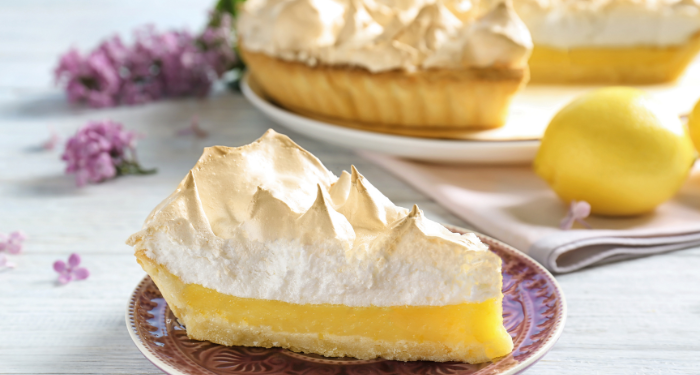
Cookbook Showdown: The Best Lemon Meringue Pie Recipes, Tested
Welcome back to cookbook showdown, where we test four recipes for the same dish from different popular cookbooks to find out which recipe reigns supreme! Today, I’m testing the best lemon meringue pie recipes from prolific bakers Martha Stewart, Cheryl Day, Mary Berry, and Nicole A. Brown. Which meringue’s stiff peaks will rise above the rest? Stay tuned to find out!
I set off on this cookbook showdown thinking, “Well, this will be easy as pie!” I’ve made successful lemon meringue pies, meringues, and lemon bars in the past. I’ve also completed apple pie and pumpkin pie cookbook showdowns, which taught me a lot of techniques and tips for pastry. But dear reader, sometimes the sugar, eggs, and flour team up to work against you. I must warn you that messy and frustrating times lie ahead.
The History of Lemon Meringue Pie
But first, let’s take a look at lemon meringue pie’s background, shall we? The genesis of the lemon meringue pie is a bit controversial, with different food historians pointing to the U.S., France, Switzerland, and the U.K. as potential homes for the dessert, all with their own versions of meringue-topped fruit pies.
But the person most often credited with inventing the beloved pie is Elizabeth Goodfellow, an entrepreneur and founder of the first American cooking school for ladies in mid-1800s Philadelphia. Goodfellow was particularly known for her lemon pudding, and it’s believed that she created the lemon meringue pie as a way to use the egg whites left over from her rich lemon custard. It became a popular recipe among Goodfellow’s mentees, finding its way into many cookbooks that eventually cemented it as an American favorite. Today, it’s a classic diner dessert and staple at any potluck.
The Basics of Lemon Meringue Pie
So what typically goes into a lemon meringue pie? Most recipes call for a pastry crust, including all four of the recipes I tested, although graham cracker crusts are sometimes preferred. The crust is partially or fully baked and then filled with a lemon curd made of lemon juice and zest, egg yolks, and sugar. Some versions are chilled to let the curd set, while others are baked and then cooled.
The curd is then topped with meringue, a mixture of whipped egg whites and sugar, which is either baked, broiled, or torched to a light golden brown. The result is a beautiful layering of flaky pastry, tart lemon curd, and sweet, fluffy meringue. Sounds easy enough, right? Well, let’s see how this cookbook showdown turned out.
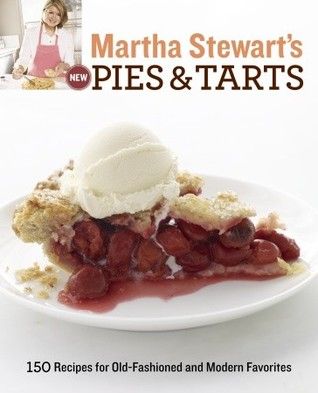
Martha Stewart’s New Pies and Tarts: 150 Recipes for Old-Fashioned and Modern Favorites
When performing a cookbook showdown, I love starting with Martha Stewart. Her recipes are typically very classic in terms of flavors, ingredients, and techniques, making them a great base to work from before trying more creative or out-of-the-box versions of a dish. Martha Stewart’s New Pies and Tarts is a fantastic cookbook for any pie lover, as it includes 150 recipes for classic pies and interesting flavor combinations. I knew it was the perfect place to begin this challenge.
Stewart’s Mile-High Lemon Meringue Pie seemed pretty foolproof, at least for a dish that requires multiple complicated techniques. The pie crust went perfectly to plan — as it should, considering it’s the pie crust recipe I’ve made more than any other. The lemon curd seemed just right, with tempered egg yolks and a nice thick texture. As instructed in the recipe, I refrigerated the custard in the crust overnight. I made a massive amount of meringue (eight egg whites worth!), piled it onto the pie, and broiled it until it had lovely golden edges. It looked beautiful! What a great start, I thought to myself! I let it cool, cut a slice, and… Whoosh. There went the lemon curd in a messy wave, spilling out when I removed a slice. Noooooo.
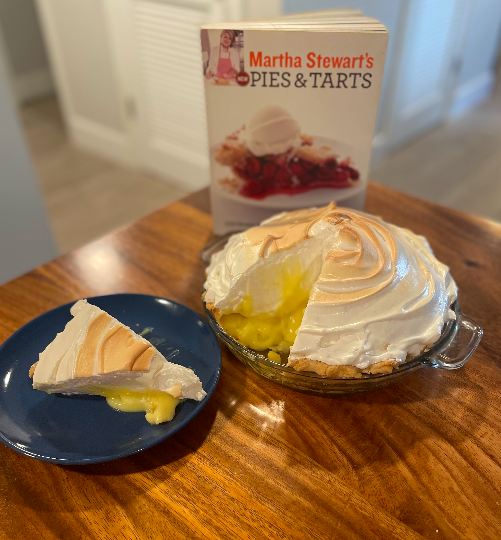
Martha Stewart’s Mile-High Lemon Meringue Pie Scores
Crust: ⅘ — Martha Stewart’s Pâte Brisée is reliable and nicely flaky. This recipe calls for the shortening variation, which turned out pretty similarly to the all butter version I’m used to.
Curd: ⅖ — Good flavor, if a little lacking in lemon punch, and clear instructions. But despite a night in the fridge and looking perfectly thickened, it didn’t set.
Meringue: 4.5/5 — The meringue here is perfection. It’s light and fluffy and actually a bit too much meringue to custard in my opinion, but it depends on your taste.
Difficulty: Moderate — Lemon meringue pie requires multiple techniques and steps, and this one is best made over the course of two days, but the instructions are clearly written.
Overall: ⅗ — If not for the goddamn lemon curd, this would have been a picture-perfect lemon meringue pie. The flavor was still great, but it was messy and near impossible to serve.
Well, I thought to myself, that wasn’t what I’d hoped. I was performing this experiment in the midst of a thick, humid July in swampy Washington, DC, so it’s possible that was the problem rather than the recipe itself. Luckily, the next cookbook in the challenge was one I’d trust with my life. Surely this, my favorite recent cookbook, wouldn’t lead me astray.
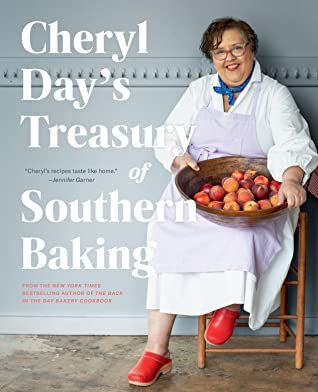
Cheryl Day’s Treasury of Southern Baking
When at first you don’t succeed, try again — this time with a cookbook I know and love, with hundreds of classic Southern recipes written by restaurateur Cheryl Day. Day has a massive collection of antique cookbooks, which is part of why this cookbook is filled with flavors and techniques you can usually only find in your family’s most well kept secret recipe box. I’ve made a handful of dishes from Cheryl Day’s Treasury of Southern Baking, and each one has come out even more perfectly than the last. When it came to lemon meringue pie, I knew I was in good hands.
And so I turned to Cheryl Day’s Lemon Meringue Pie recipe with fresh eyes and a full heart. The all-butter pie crust was beautiful. I paid special attention to the lemon curd, making sure it was thoroughly thick and glossy. Unlike Martha Stewart’s pie, this one called for me to let the custard cool only slightly while I made the meringue, then to bake it for 8 to 10 minutes and let cool for at least an hour before serving. Remembering my disappointing first pie, I let it cool for over three hours before slicing into it. This time, I cut the pie with a bit more trepidation but plenty of hope. For a moment, it looked fine! And then…. Whoosh. Another lemon curd flood, sending pie filling sloshing across my pie plate. WHAT? Betrayed by CHERYL DAY??? I took the picture as quickly as possible, but let me assure you that it turned into quite a citrusy mess.
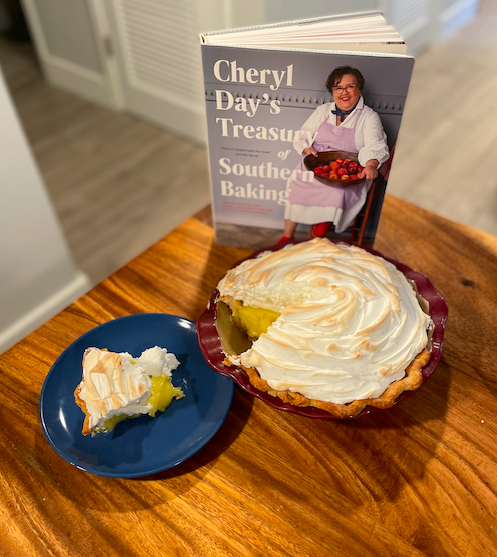
Cheryl Day’s Lemon Meringue Pie Scores
Crust: ⅘ — Great golden crust, with a little vinegar and baking soda added for extra lift and flakiness.
Curd: 2.5/5 — The lemon flavor was lovely, but this was still a pie you had to eat with a spoon.
Meringue: 5/5 — The meringue on this one was truly perfect, and Cheryl Day’s thorough instructions for making it are unmatched.
Difficulty: Moderate — This again requires several different techniques, but Cheryl Day’s descriptions are really useful, especially if it’s your first time making meringue.
Overall: ⅗ — This pie had so much going for it. Yet again, if the lemon curd had only set up, it would have been a showstopper. But alas.
This is the first moment that I started to wonder, “Is it me? Am I a terrible baker? Am I disappointing my cookbook showdown audience?” If my hero Cheryl Day couldn’t help me, I worried I might be a lost cause. Remembering past successes with lemon meringue pie, I was determined to get it right. I consulted a friend who’d been to culinary school. He suggested that the problem with both of these recipes might be that they only use egg yolks in the lemon curd. Whole eggs, he suggested, might help it set up properly. With that in mind, I turned to my third recipe, which indeed called for four whole eggs plus four egg yolks in the curd. Could this be the one?

The Up South Cookbook: Chasing Dixie in a Brooklyn Kitchen by Nicole A. Taylor
This cookbook by Nicole A. Taylor, a Southerner who moved up to Brooklyn and reclaimed her Georgia roots, has so much heart in its flavors and family stories. But I’ll be honest: The recipes I’ve tried from it have been pretty hit and miss. The baked goods have especially fallen short in my experience, often leaving out important steps and commonly accepted techniques. But in this case, I was intrigued by the flavors, and my chef friend’s advice on whole eggs gave me hope that this recipe might be just what I needed.
Nicole A. Taylor’s Citrus Meringue Pie actually calls for a curd made from a variety of citrus fruits. I used her recommendation of lemon, lime, and orange juice. The crust seemed to go off without a hitch, so I turned to the curd. I was surprised to find that Taylor’s recipe doesn’t call for starting with cooking the fruit juice and sugar, then using that to temper the eggs. Instead, it was all whisked together and brought to a simmer on the stove — along with a shockingly large amount of butter. Three sticks! In the curd alone! Well, if anything, I hoped that butter would help the curd set up properly when cooled. I cooked it extra long and gave it extra time in the fridge just in case. The meringue had a surprisingly small amount of sugar, but I forged ahead according to instructions. As I worried, the meringue wasn’t as stable as the two previous pies, shrinking as it baked and cooled. But surely the curd would go according to plan this time, right?
Wrong. I cut the pie only to find another runny curd, this time paired with a lackluster meringue. You can imagine my angry scream.

Nicole A. Taylor’s Citrus Meringue Pie Scores
Crust: ⅘ — This was a beautiful crust until it started absorbing the curd and getting soggy.
Curd: 1.5/5 — Oh dear. I was optimistic about the combination of citrus flavors, but without dissolving the sugar separately and tempering the eggs, it was grainy and it still didn’t set up.
Meringue: ⅖ — I did some research and learned that sugar does way more than sweeten meringue. It stabilizes the egg whites by bonding with the water molecules and keeping them from evaporating, therefore allowing the meringue to set without collapsing. This meringue didn’t have enough sugar and the texture suffered.
Difficulty: Advanced — The instructions here are oversimplified, so unless you’re familiar with these techniques, you’ll likely find yourself frustrated. And although not tempering the eggs saves a few steps, it means you really have to babysit the lemon custard.
Overall: ⅖ — I couldn’t eat more than a few bites due to the grainy, runny texture of the curd and lackluster meringue.
I was feeling pretty discouraged at this point, dear reader. It seemed like time to throw in my apron and give up. But I’m not a quitter. The fourth pie I’d planned to make was a vegan twist on lemon meringue pie, using aquafaba (whipped liquid from cooked chickpeas) in place of egg whites and flax meal in place of the eggs in the curd. But I’d chosen that recipe expecting at least one of the more traditional recipes to turn out well. With the clock running out, I chose instead to skip that recipe and try one more traditional lemon meringue pie. I needed to find someone I could really trust, someone whose techniques and recipes are tested. I needed a cookbook by a baker of world renown, a legendary culinary queen. I needed…
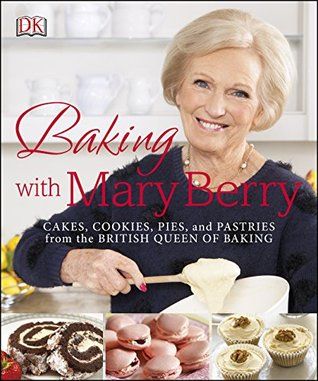
Baking With Mary Berry: Cakes, Cookies, Pies, and Pastries from the British Queen of Baking
Yes. I ran to the bookstore and bought a new cookbook to give myself one more chance to get lemon meringue pie right. And after years of rewatching early seasons of The Great British Baking Show, I knew Mary Berry was who I needed to bring this cookbook showdown home. Mary Berry has written more than 80 cookbooks in her six decades of cooking, and this one is a collection of her most beloved desserts and baked goods. Lucky for me, lemon meringue pie is counted among those favorites. The marketing copy promises “no-fuss, homey recipes that always work,” and boy, did I need a recipe that always works.
I was heartened by looking at the list of ingredients, which called for a whopping ¾ cup of cornstarch to thicken the lemon curd (compared to ¼ and ⅓ cup respectively in Martha Stewart and Cheryl Day’s cookbooks, and no thickening agent in Nicole A. Taylor’s recipe). The pie crust included an egg yolk, which seemed to strengthen it a bit and made for, I must say, the most beautiful parbaked crust I’ve ever made. The curd technique was different from the other recipes; I mixed boiling water into a lemon juice and cornstarch mixture, which became instantly (and promisingly) thickened before whisking it into the egg yolks and sugar. The meringue had the appropriate amount of sugar to stabilize, and unlike the other pies that were baked only a few minutes to brown the meringue, the whole thing was baked for 45 minutes. I flipped on the broiler for a brief moment to get a little more color on the meringue, and it turned out that 30 second moment was too much. My sincerest apologies to Mary Berry for the slight burn on the meringue. It was my mistake, not hers!
The recipe claims it can be eaten warm or chilled, but if I saw another runny curd, I was going to light my entire condo building on fire. So I gave it its best chance at setting by letting it cool in the fridge before cutting a slice. And when I did, the clouds parted, the sun started shining, and BEHOLD: a clean slice of non-runny lemon meringue pie!
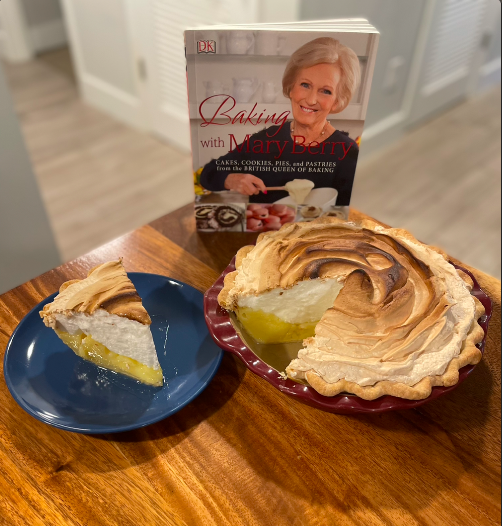
Mary Berry’s Lemon Meringue Pie Scores
Crust: 5/5 — The added egg yolk made this crust really easy to work with, and it held its shape well. It’s the perfect base for a pie filling that needs a little structure.
Curd: ⅘ — Honestly, all this pie needed was a filling that didn’t turn into mush the moment I cut it. It’s a little lacking in lemon flavor, but it’s a great texture and it actually set up correctly. Imagine that!
Meringue: 5/5 — The meringue came together perfectly, and baking it longer at a lower temperature helped it set up well so that it lasted well past the day I baked it. (The top burned a little, but that was all me, no fault of Ms. Berry.)
Difficulty: Moderate — Mary Berry’s instructions are fairly slim, but her method of making the curd was actually a lot easier and more effective than the other recipes I tried.
Overall: 4.5/5 — The crust, presentation, and textures of this pie are a homerun. With a tiny punch more of lemon flavor, it would be perfection.
Lessons Learned
This is my eighth cookbook showdown — my third cookbook showdown starring pie — and it turned out to be the most challenging yet. I’ve never had three of four recipes essentially fail. It was a struggle for both me and my wife, who not only had to taste test all four pies but also had to listen to my complaining. Here are some of the lessons I learned along the way:
- Humidity and temperature matter. I’ll definitely retry some of these recipes come winter to see if the DC swampy summer was the culprit for my runny lemon curds. If you live somewhere hot and humid, you may need to adjust recipes to add more thickening agents or give your curd more time to set after cooking/baking.
- Meringue can be tricky. It needs plenty of sugar to stabilize, so don’t skimp. But be sure to add the sugar verrrrrry slowly as it whips, a teaspoon at a time or less, to make sure it fully integrates into the egg whites. Whisk it until it’s shiny and holds its shape firmly. When you spread it on the pie, push it all the way to the edges of the crust to prevent shrinkage. And if you’re broiling or torching it, keep a close eye on it, because it can burn very quickly!
- Temper your egg yolks. When it comes to lemon curd, short cuts have a big impact on the final product. Carefully temper your egg yolks with hot ingredients to make sure you get the desired texture and don’t accidentally cook the eggs before they’re incorporated.
- Never give up. Part of me wanted to count lemon meringue pie as my lifelong nemesis after three messy, disappointing pies. But I kept trying, and the final pie was absolutely worth the work. Failed baking experiments are never a reason to throw away your apron; they’re a chance to learn something new to make your next culinary creation even better.
After all that, do you really need me to tell you the winner? In case it wasn’t obvious….
The Winner: Mary Berry’s Lemon Meringue Pie from Baking with Mary Berry
She’s the British Queen of Baking for a reason, folks! This pie turned out wonderfully, with a beautifully flaky crust, a light, sweet meringue, and most importantly to me, a well set lemon curd that made for easy slicing and serving. For a scrumptious pie with no soggy bottoms in sight, look no further!
If you enjoyed this cookbook showdown of the best lemon meringue pie recipes, you may also enjoy:
Cookbook Showdown: The Best Chocolate Cake Recipes, Tested
Cookbook Showdown: The Best Cornbread Recipes, Tested
Cookbook Showdown: The Best Iced Tea Recipes, Tested










